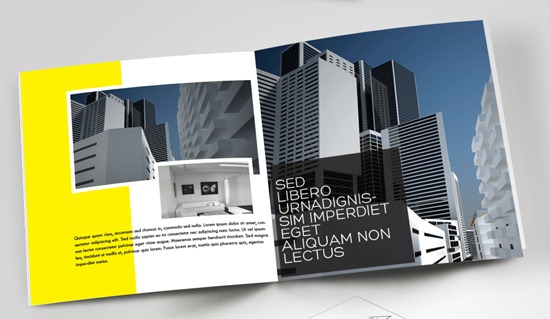
We will assign a project manager, field superintendent, engineer and other staff members as required to effectively manage the construction process. Praesent dapibus, neque id cursus faucibus, tortor neque egestas augue, eu vulputate magna eros eu erat. Aliquam erat volutpat. Nam dui mi, tincidunt quis, accumsan porttitor, facilisis luctus, metus.
During the construction of any project, the coordination of the trades is an integral part of the process, especially with respect to the mechanical and electrical trades. Morbi in sem quis dui placerat ornare. Pellentesque odio nisi, euismod in, pharetra a, ultricies in, diam. Sed arcu. Cras consequat.
We will work with all project team members to define the logistical requirements for the construction process, such as areas for deliveries, placement of barricades (if required) and hours of operation. Donec odio. Quisque volutpat mattis eros. Nullam malesuada erat ut turpis. Suspendisse urna nibh, viverra non, semper suscipit, posuere a, pede.
I am text block. Click edit button to change this text. Lorem ipsum dolor sit amet, consectetur adipiscing elit. Ut elit tellus, luctus nec ullamcorper mattis, pulvinar dapibus leo.
I am text block. Click edit button to change this text. Lorem ipsum dolor sit amet, consectetur adipiscing elit. Ut elit tellus, luctus nec ullamcorper mattis, pulvinar dapibus leo.
I am text block. Click edit button to change this text. Lorem ipsum dolor sit amet, consectetur adipiscing elit. Ut elit tellus, luctus nec ullamcorper mattis, pulvinar dapibus leo.
During the construction process, we will provide up-to-date information with respect to changes that have occurred. Aliquam erat volutpat. Nam dui mi, tincidunt quis, accumsan porttitor, facilisis luctus, metus.
One of the most critical stages of the construction process is the commissioning and closeout of the project. Lorem ipsum dolor sit amet, consectetuer adipiscing elit. Donec odio. Quisque volutpat mattis eros. Nullam malesuada erat ut turpis. Suspendisse urna nibh, viverra non, semper suscipit, posuere a, pede.

An overview of our construction services from Construction Management, Design-build, General Contracting to Small Jobs and Service Work

Knowing your roof’s pitch helps in planning additions, remodels, repairs, or replacements. Pitch is measured by the number of inches the roof rises vertically for every 12 inches horizontally. For example, an 8/12 pitch means the roof rises 8 inches for every 12 inches of run.
Prime Commercial treats every building as if it were our own. From reroofing and waterproofing that boost curb appeal to preventative maintenance and fast repairs that save money, our team delivers consistent results.
With drone technology, we give you a bird’s-eye view of your roof. This allows us to spot risks early without sending a crew onto the roof, ensuring safety and accuracy during inspections.
Your roof can say a lot about you and your business. How does your roof reflect your business and your appearance?
Commercial roofs come in various shapes and sizes, all unique to the business they cover. We offer some types of roofs that are more common among residential properties, but also a variety of common commercial types of roofs.
We have included a few of the most common types of commercial roofs and roofing materials, both natural and synthetic, to fit your business budget and style.
There are three main categories that determine your commercial roof type:
To protect all that’s under your business’s roof, metal roofing is one of your longest-lasting options. A periodic application of an elastomeric coating that prevents rusting and galvanization can extend the life of your roof even more. Life expectancy: 50+ years.
At Prime Commercial, we understand that a commercial flat roof is more than just protection—it’s an investment in your business’s long-term success. With 30+ years of experience, we specialize in flat roofing systems that deliver durability, energy efficiency, and peace of mind.
Whether managing a retail center, warehouse, or multi-use facility, our certified team uses advanced materials like TPO, EPDM, and PVC. Backed by industry-leading warranties and a reputation for integrity, we’re the partner you can count on—every square foot of the way.
A cost-effective, low-maintenance option with torch-free installation. Performs well under the elements, with high reflectivity in white and tan that qualifies for Energy Star approval. Other colors include black and grey. Life expectancy: 20–35 years.
Thermoplastic roofing ideal for flat roofs. TPO sheets are heat-welded into a single impenetrable layer that protects against the elements and resists most chemicals. Life expectancy: 20–30 years.
A synthetic rubber highly resistant to heat and water, though not heat-welded. Best for flat roofs with positive pitch to avoid water pooling. Life expectancy: 25–35 years.
Thermoplastic PVC roofing forms watertight, heat-welded seams stronger than the membrane itself. Often called the “Alfa Romeo” of single-ply membranes. Life expectancy: 25–35 years.
There are many other styles of commercial roofing. We’d be happy to review them with you to find the best fit for your business.
A flat-like roof with slight pitch, ideal for warehouses and small business additions.
Upside-down “V” style, common in neighborhoods but less in commercial buildings. Simple to build but vulnerable in high winds.
Four sloping sides without vertical roof lines. More complex framing. Mostly residential, though found in some commercial buildings.
Steep-sided roofs meeting at the top in an “A” shape. Seen in churches, small businesses, and restaurants.
A series of gable-style roofs joined side by side, resembling an accordion. Common in warehouses, libraries, and convention centers.